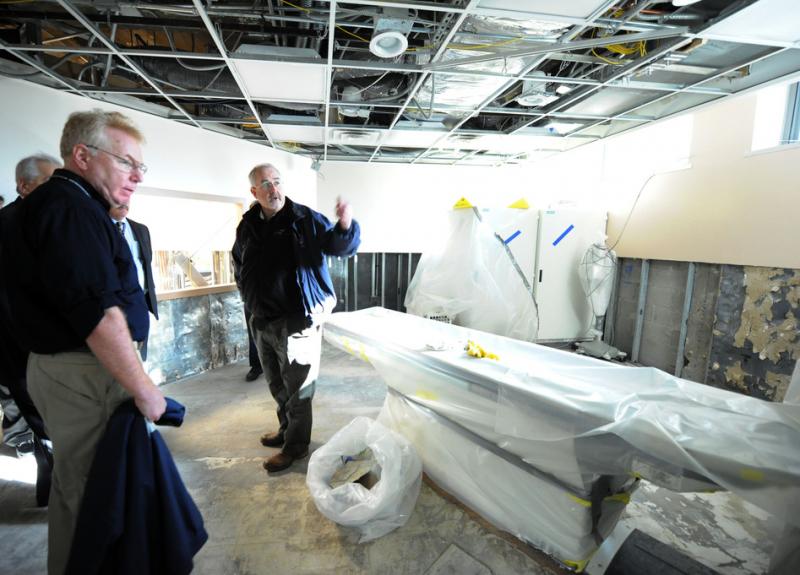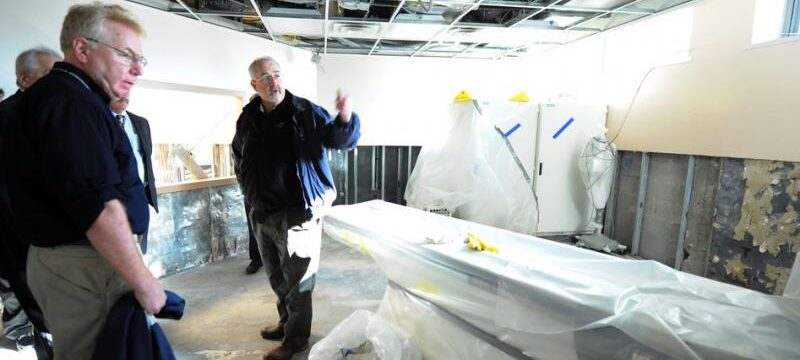A Toolkit for Sustainable and Climate-Resilient Facilities
This Toolkit has been developed to assist organizations engaged in health care facility climate resilience as they improve their response to extreme weather events. The disruptions and losses incurred by the U.S. health care sector following recent extreme weather events demonstrate the need for specific guidance on ways to manage the new and evolving hazards presented by climate change. These events have also provided opportunities to learn from past disasters so that health care facilities, and the communities they serve, can be more resilient in the future.
By focusing specifically on improving health care infrastructure resilience, this Toolkit aims to assist organizations in reducing future vulnerabilities and losses, and improve the functioning of a broad range of health care facilities. The Toolkit is organized around five elements that illustrate specific health sector resilience principles and practices. Each element is accompanied by checklists and other resources that enable readers to further explore the topic. Case studies are included for each element of the framework.
The five-element framework does not directly address important additional considerations, such as institutional and administrative support for disaster- or emergency-preparedness efforts, education and training, and disaster response, recovery, and rebuilding. This framework and its accompanying checklists and resources should thus be integrated within a broader hospital and health care facility emergency preparedness enterprise; the framework itself should not replace current hazard vulnerability analysis tools and frameworks. By focusing specifically on health care infrastructure resilience, this five-element framework aims to help a broad range of health care facilities and organizations improve their ability to function in the face of climate change and extreme weather events.
Framework for Resilient Health Care Settings
Climate Risks and Community Vulnerability Assessment
Maintain up-to-date data on climate hazards and community climate and health vulnerabilities, and use hazard vulnerability analyses to inform health services and infrastructure planning today and for the future. Understand the role of the hospital, long term care and ambulatory settings within the community during and after identified extreme weather events, and use this knowledge to inform resilience strategies.
Land Use, Building Design, and Regulatory Context
Understand and catalog the land use, building design and regulatory context within which current health care facilities are situated. Are site improvements and existing building structures adequate to withstand extreme weather events now and in the future? What were the design assumptions for roads, stormwater quantities, building envelopes and structures, roof drainage systems? Consider the larger local and community land use vulnerabilities that may impact health care facilities in the face of extreme weather—aging or inadequately sized infrastructure or removal of natural buffers.
Infrastructure Protection and Resilience Planning
Construct critical health care facilities with sustainable communications, energy, water and waste infrastructure in appropriate locations to a standard of climate resilience to withstand events over the anticipated life of the structure. Infrastructure resilience measures reduced disruption, incapacitation or loss of use of critical health care facilities. For less critical facilities: design for safe closure prior to an event with the ability to resume services within 48 to 96 hours following a major event.
Essential Clinical Care Service Delivery Planning
Ensure that essential clinical care services remain operational during and immediately following extreme weather events. Often, hospitals must both shelter inpatients in place as well as handle patient care surges related to the weather event. Emergency departments, urgent care centers, laboratory and imaging services must remain operational. Nursing homes and residential care facilities house medically fragile, vulnerable populations. Research facilities house irreplaceable samples and data. In addition, health care settings may serve important non-traditional disaster response roles in their communities: sources for clean water, food, and shelter for a larger affected population.
Environmental Protection and Ecosystem Adaptations
Protect and support ecosystems and natural buffers to mitigate extreme weather hazards that may threaten your building or campus. Green infrastructure practices, heat island mitigation and enhanced stormwater management are key contributory strategies. Understand that ecosystems, wildlife corridors, and natural hydrology patterns extend beyond individual property boundaries; engage the broader community in applying best design practices for adapting to extreme weather risks in order to mitigate future damages to property and people.
Checklists for Sustainable and Climate-Resilient Facilities
This Toolkit contains a set of introductory checklists for each of the five elements of climate resilience. These checklists can assist health care organizations in assessing climate-related infrastructure and care-delivery vulnerabilities at both a system and facility level. These checklists are available both as a single document here (see links below) or individually at the end of each element section.
Who should participate in completing the checklists? Resilience requires a multi-disciplinary approach. At a minimum, representatives from Facilities, Security, Engineering, Sustainability, Environmental Services, Nursing (Clinical Care), Supply Chain, and Emergency Planning might all participate in the exercise. In addition to internal staff review, community partners and government relations may need to be included to provide broader community and regional context during the exercise.




